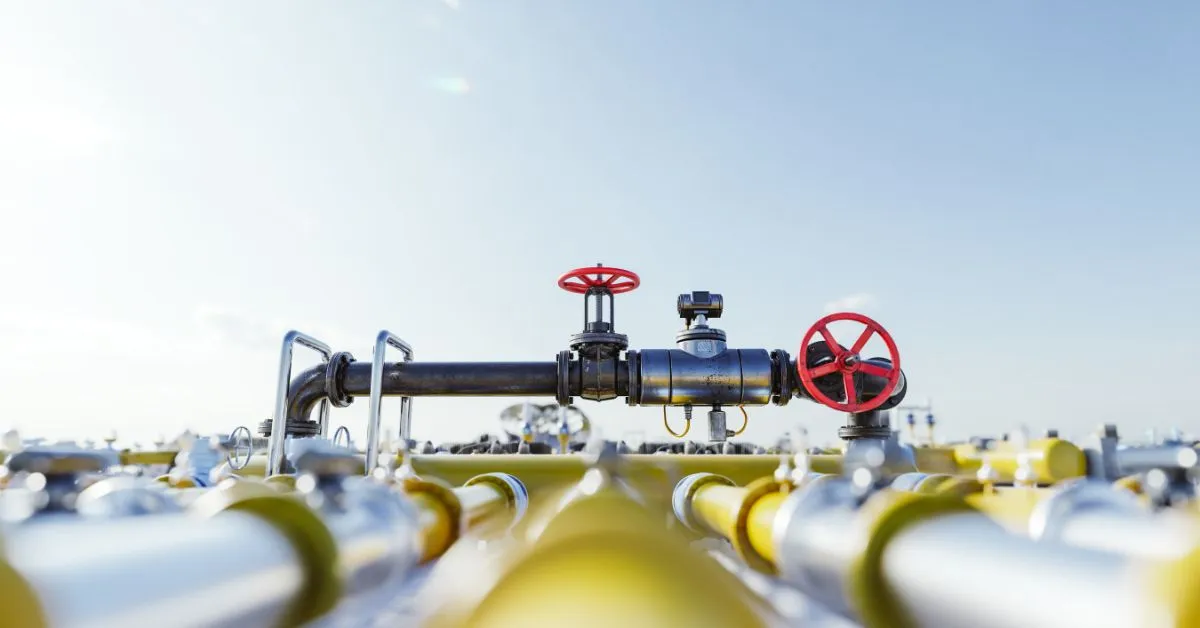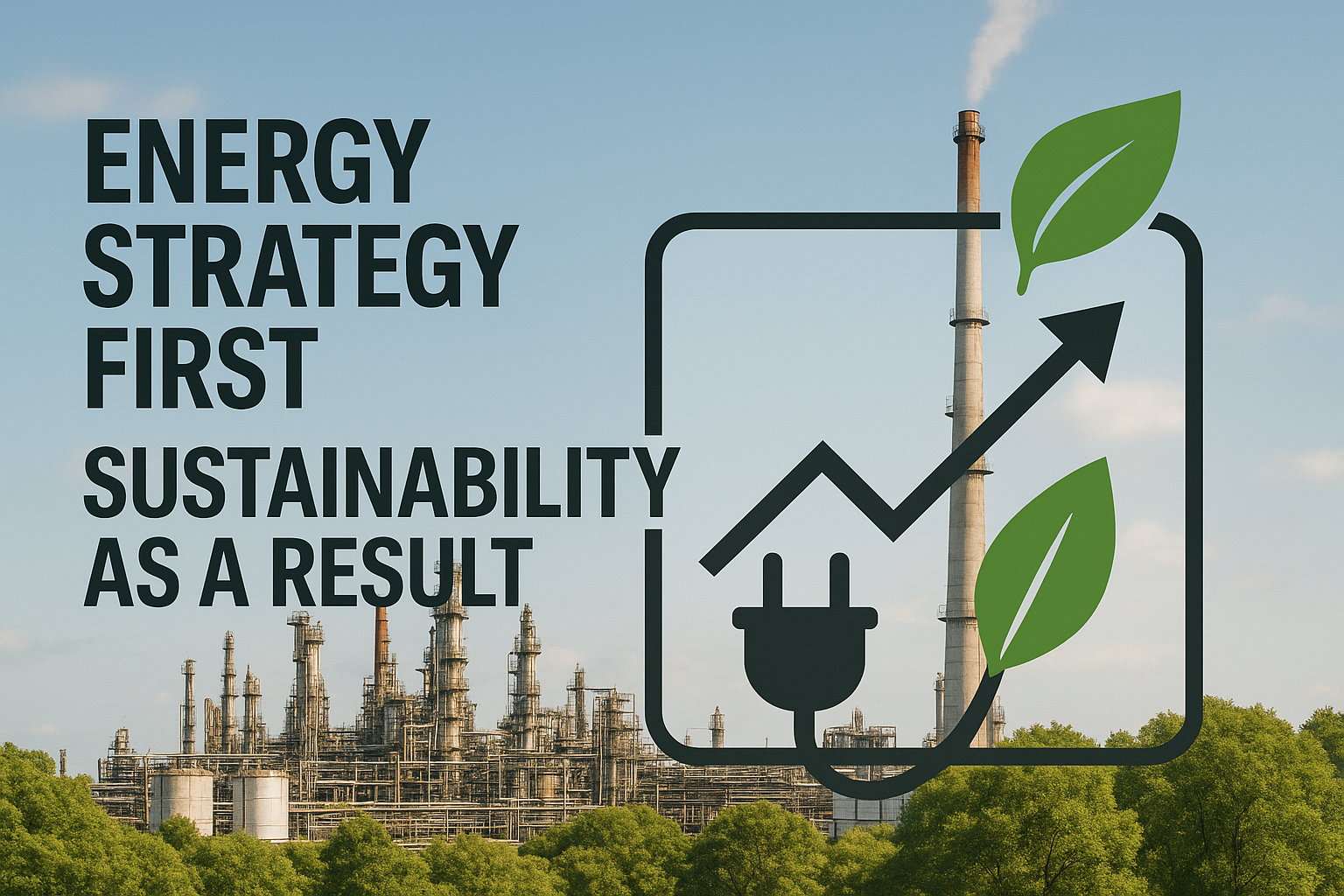Natural gas represents a significant portion of industrial energy bills, with prices pushing fuel costs to the top of every plant’s cost stack. At the same time, surging demand from energy-hungry data centers and brisk LNG exports are tightening supply, amplifying price swings, and intensifying scrutiny of combustion-related emissions.
Against this backdrop, AI-powered optimization is helping process industry leaders cut natural gas consumption without compromising throughput, safety, or product quality.
The State of Industrial Natural Gas Usage
The confluence of extreme weather, expanding LNG export capacity, and data center construction is creating unprecedented pressure on natural gas markets.
Record cold snaps pushed consumption to new highs across every sector, while production discipline among shale producers limits quick supply relief. Competition for each cubic foot of gas keeps bids firm even during shoulder months.
For process industry leaders, fuel represents the largest variable cost, so volatility flows straight to operating margins. Meanwhile, regulators and investors expect credible decarbonization plans. Cutting combustion emissions without compromising throughput demands new tactics beyond traditional advanced process control (APC).
Reduce Natural Gas Consumption in 5 Ways
AI-powered optimization solutions enable you to identify hidden inefficiencies, reduce gas consumption, and demonstrate tangible progress on both cost and carbon, meeting today’s market pressure with data-backed action.
Let AI Find Hidden Inefficiencies
Natural gas slips away in small, often invisible pockets, slight burner misfires, compressors that run a fraction harder than needed, heat exchangers that foul just enough to escape alarms. These micro-losses accumulate into substantial waste that traditional process control systems overlook.
AI models excel at spotting these inefficiencies by unifying sensor streams, sample results, and historian archives into a single analytical layer. Advanced algorithms sift through millions of data points and surface patterns that human teams miss. Real-time machine learning can flag subtle anomalies long before operators notice them, turning raw data into immediate energy savings opportunities.
Consider compression trains, where AI models learn the nonlinear interaction between suction pressure, discharge temperature, and recycle flow. These models continuously tune setpoints so each stage operates at its true efficiency peak.
Because the recommendations feed directly to the distributed control system (DCS), you reduce fuel use without sacrificing throughput. Plants deploying similar energy optimization projects see savings on overall energy intensity, translating to measurable reductions in CO₂ per tonne of product.
Continuously Adjust Process Setpoints with AI
Static operating procedures leave energy on the table. Industrial AI models analyze live sensor feeds and push new setpoints to the DCS in real time, adapting to changing conditions faster than manual adjustments.
Rolling out this capability starts with streaming historian and sample results to an AI platform, training models on months of operations, and deploying them in advisory or closed-loop mode.
Reinforcement learning (RL) controllers refine decisions as conditions evolve, while built-in safeguards validate every move against established KPIs before writing it back to the DCS.
Plants report tighter specification control, fewer manual interventions, and measurable improvements in fuel efficiency. Nearly 72% of leaders adopting AI-enhanced control saw clear cost and efficiency improvements. Success depends on reliable data pipelines, seamless integration with legacy systems, and operator confidence in the model’s recommendations.
Predict and Prevent Energy Spikes
Start-ups, sudden feed changes, or equipment trips can push gas demand far above steady-state needs, short bursts that inflate fuel bills and spike emissions per tonne of product. These events often begin with subtle shifts in vibration, temperature, or power draw that escape traditional alarms.
Feeding these signals into AI models enables early detection of drift patterns before they force emergency shutdowns. The system flags early-stage anomalies, recommends gentle ramp-downs, and calculates contingency setpoints so downstream units keep running smoothly while addressing root causes. This proactive approach prevents the fuel-hungry restart sequences that follow unplanned trips.
Companies using these strategies have cut maintenance costs and boosted equipment availability. Every avoided trip eliminates the energy waste of restarts while strengthening day-to-day reliability and reducing emissions.
Balance Demand Across Units in Real Time
Optimizing individual furnaces or compressors in isolation often pushes energy waste to other parts of the plant. A comprehensive AI approach requires multi-unit models that function like advisors, scanning every utility meter, flow tag, and sample result to understand how heat, steam, and fuel move through the entire system.
Adding an economic optimization layer enables continuous searching for the combination of setpoints that delivers production targets at the lowest gas cost. This becomes evident when AI dynamically shifts load from a boiler running near excess oxygen limits to a newer, more efficient unit, or reschedules high-pressure compressor starts to align with off-peak tariff windows.
Beyond lower fuel bills, system-wide balancing improves reliability by smoothing demand spikes that fatigue equipment. The main challenges involve bringing historian data from every unit into a common context, breaking organizational silos, and scaling models across multiple sites. Plants that prioritize data integration first often achieve rapid payback, setting the stage for broader efficiency gains.
Support Operators with Smart Recommendations
Control rooms stream thousands of data points every second, yet operators often juggle alarms, shifting feed qualities, and tight safety constraints with only their experience to guide them. As seasoned staff retire, that cognitive load grows heavier for newer hires.
An AI recommendation layer reduces this burden by translating raw historian and sensor data into clear next steps. The engine ranks possible moves by economic impact, attaches confidence scores, and provides what-if testing before committing to changes. This guidance accelerates skills transfer and builds trust in data-driven decisions.
Turning complex data streams into concise, plant-specific advice helps operators make better decisions faster. The combination of human expertise with AI insights creates a powerful partnership that improves both efficiency and safety outcomes.
Transform Your Operations with AI Optimization
Each of these five strategies works independently, but together they compound to cut fuel bills, improve reliability, and shrink emissions. Process plants already run reinforcement learning controllers on critical units, with these systems delivering greater stability than manual operation.
These real-world results underscore that AI optimization is ready for front-line operations, not just pilot programs. The technology has matured from experimental to operational, with proven track records in demanding industrial environments.
Imubit’s platform brings these capabilities together through its Closed Loop AI Optimization solution, continually learning plant-specific behavior and writing optimal setpoints back to the distributed control system in real time. For process industry leaders seeking sustainable efficiency improvements, Imubit’s solution offers a data-first approach grounded in real-world operations.




